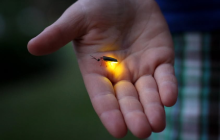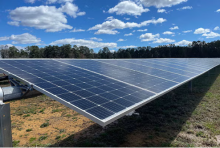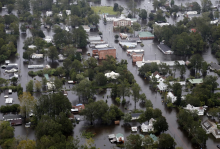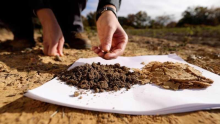
Are all leaves the same?
Phenomenon Description: Leaves with different sizes, shapes and colors.
Location: Wake County, Wake Forest
Grade Level or Course: Kindergarten
The North Carolina Atlas of Phenomena is a resource to support science teachers throughout the state to develop their own understanding of different phenomena and the disciplinary core ideas needed to explain them.

Phenomenon Description: Leaves with different sizes, shapes and colors.
Location: Wake County, Wake Forest
Grade Level or Course: Kindergarten

Phenomenon Description: Once only native to Central and South America, the nine-banded armadillo has slowly migrated to the southeastern US. The first confirmed observations in North Carolina occurred in the late 2000s.
Location: See NC Wildlife Resources Map for locations in the state
Grade Level or Course: 4

Phenomenon Description: The North Carolina mountains are home to several species of fireflies, most notably the synchronous and blue ghost fireflies, which put on stunning light shows in late spring and early summer.
Location: Graham
Grade Level or Course: Chemistry

Phenomenon Description: Solar panel farm in Robeson County, NC
Location: Robeson County
Grade Level or Course: Earth and Environmental Science

Phenomenon Description: Kudzu growing along the road
Location: Wake County
Grade Level or Course: Biology

Phenomenon Description: Yellow dandelion plant in the middle of a grassy downtown area.
Location: Halifax Mall, Raleigh, North Carolina
Grade Level or Course: Grade 3

Phenomenon Description: Jockey's Ridge State Park is home to the tallest living sand dune system on the Atlantic Coast.
Location: Jockey's Ridge State Park, Nags Head
Grade Level or Course: Grade 4

Phenomenon Description: Hurricane Impacts on Coastal and Inland NC
Location: Carteret County, Morehead City
Grade Level or Course: 7th grade

Phenomenon Description: Commissioning ceremony of the USS North Carolina - SSN 777 (US Navy - Virginia Class Attack Submarine) in Wilmington, NC on May 3, 2008.
Location: New Hanover County, Ocean
Grade Level or Course: Physical Science

Phenomenon Description: Adults and children alike enjoy the summer thrill of racing down waterslides like the ones at Carolina Harbor Waterpark in Charlotte.
Location: Mecklenburg County, Amusement Park
Grade Level or Course: Physics

Phenomenon Description: Unusual orange growth on an Eastern Red Cedar.
Location: North Carolina
Grade Level or Course: 8

Phenomenon Description: Tilled vs Non-tilled Soil
Location: Rockingham County, Reidsville
Grade Level or Course: Earth and Environmental Science

Phenomenon Description: Blue Hue of the Blue Ridge Mountains
Location: Blue Ridge Mountains
Grade Level or Course: 6

Phenomenon Description: A big swarm of 200 dragonflies (a mix of common green darners and wandering gliders) flying over a grassland at an environmental education center in Raleigh.
Location: Wake, Prairie Ridge Ecostation
Grade Level or Course: Grade 5

Phenomenon Description: The shells of Eastern box turtles exhibit a wide variety of color and pattern variations within the same species. The Eastern box turtle is our state reptile and is found throughout the state.
Location: Eno River State Park, Durham, NC
Grade Level or Course: Grade 7